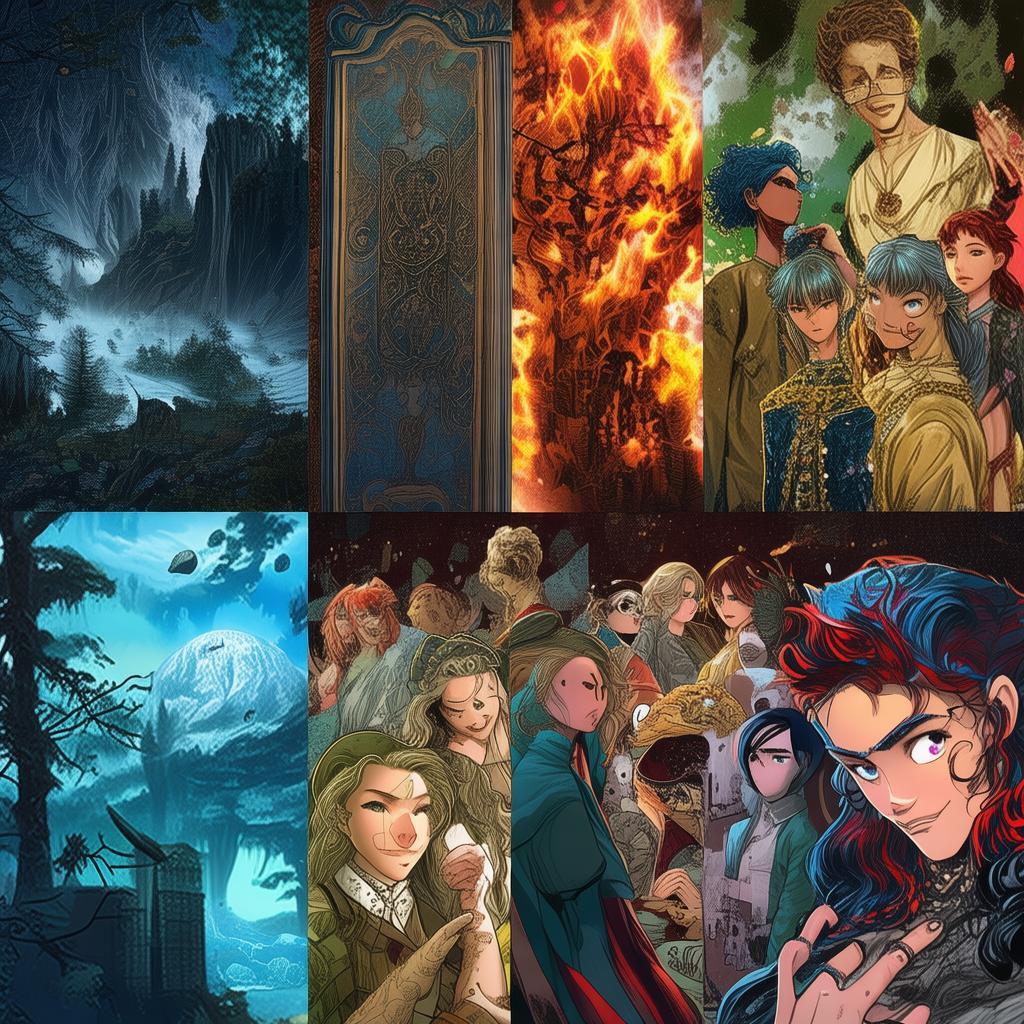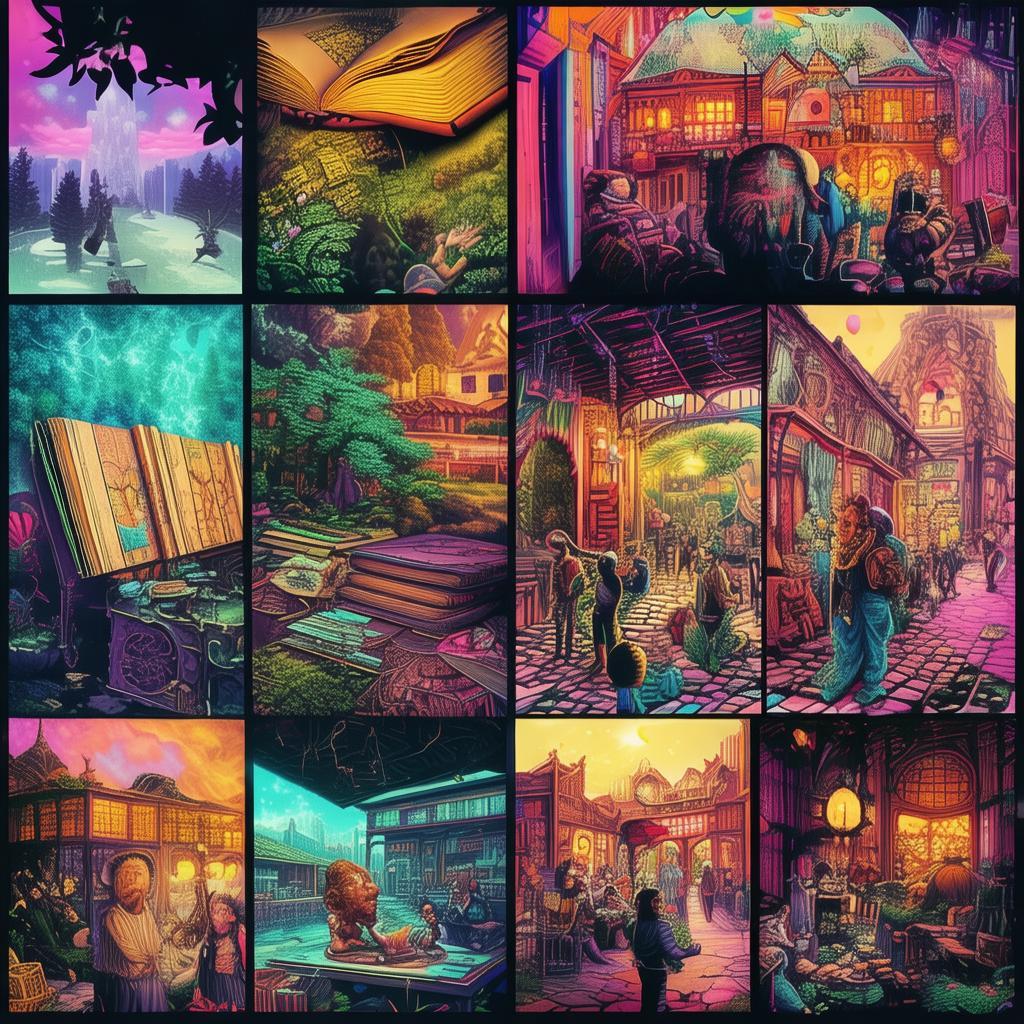The Last Seed: A Banker's Harvest of Redemption
In the heart of the verdant countryside, there lay a village that had thrived for centuries on the fertile soil and the hands of its people. The land was a beacon of life, with crops that danced with the wind and the laughter of children that echoed through the fields. Yet, as the years waned, the village faced a silent crisis: the soil was losing its richness, and the harvests were dwindling.
Amidst this backdrop, there was a man named Elias, a banker by trade, known for his meticulous records and unyielding focus on profit. He was a figure of solitude, his home a stark contrast to the village's rustic charm. Elias lived in a modern, impersonal house, surrounded by the trappings of wealth that he believed would secure his place in the world.
One evening, as the last rays of sunlight painted the sky in hues of orange and purple, Elias received an unexpected letter. It was from the village elder, a man named Thomas, who had seen the decline of the land and the suffering of the people. The letter was a call to action, an invitation to Elias to join the Agrarian Alliance, a movement that sought to reclaim the land and its bounty.
At first, Elias dismissed the letter as a whimsical notion, thinking it was a passing fancy of the elder. However, the letter haunted him, and as days turned into weeks, he found himself drawn to the village. There, he met with the members of the Agrarian Alliance, a diverse group of people who had come together to save their home.
The villagers were resilient, their faces etched with the struggles of recent years. They shared stories of barren fields and empty bellies, but their eyes held a spark of hope. Among them was a young woman named Maria, whose hands were calloused from the toil of the soil, but whose heart was full of dreams for her community.
Elias was intrigued by their cause and, in a moment of unexpected vulnerability, decided to lend his skills to the alliance. He began to study the land, the weather patterns, and the ancient practices that had once thrived here. He learned about the cycles of the earth and the importance of harmony with nature.
As the seasons changed, Elias and the villagers worked side by side, planting seeds and nurturing the soil with care. They shared stories and laughter, and for the first time in years, Elias felt a sense of belonging. He was no longer a man apart but a part of a community.

The harvest was bountiful, and the villagers celebrated with a feast that night. Elias, who had once seen the land as a mere commodity, now saw it as a sacred gift. He realized that true wealth lay not in the coins he counted but in the connection he shared with the earth and its people.
However, their victory was short-lived. A wealthy landowner, who saw the village's success as a threat to his own interests, moved to take control of the land. He offered the villagers a handsome sum to leave their homes, but they refused.
The conflict escalated, and Elias found himself at the center of it. He stood before the villagers, his heart pounding in his chest. "We have worked for this," he declared, his voice steady. "We have restored the land and its bounty. We will not give it up."
The landowner's agents arrived, ready to evict the villagers. But instead of confrontation, Elias proposed a deal. He offered to buy the land and lease it back to the village, ensuring that the community would continue to thrive. The landowner, taken aback by Elias's proposal, agreed to the terms.
The village was saved, and the Agrarian Alliance continued to grow. Elias became a symbol of hope, a man who had turned from the path of profit to the path of redemption. He realized that true success was not measured in money but in the impact he had on the world around him.
The Last Seed: A Banker's Harvest of Redemption is a story of transformation, of a man who discovered the true value of life and the earth. It is a tale that resonates with the universal struggle between greed and compassion, between the past and the future. It is a story that will leave readers reflecting on the importance of community and the sacredness of the land.
✨ Original Statement ✨
All articles published on this website (including but not limited to text, images, videos, and other content) are original or authorized for reposting and are protected by relevant laws. Without the explicit written permission of this website, no individual or organization may copy, modify, repost, or use the content for commercial purposes.
If you need to quote or cooperate, please contact this site for authorization. We reserve the right to pursue legal responsibility for any unauthorized use.
Hereby declared.









